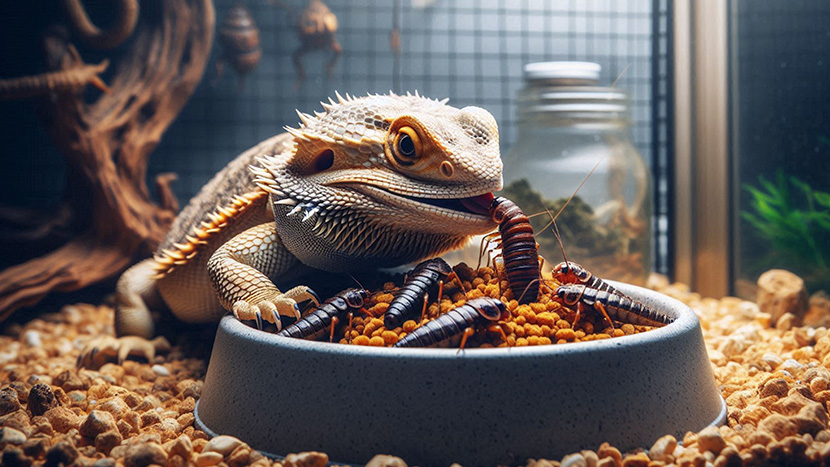The Science Behind Feeder Insects and Pet Nutrition
Reptiles and lizards (Class Reptilia), especially insectivorous species like bearded dragons and leopard geckos, require a diet rich in nutrients to thrive. Roaches, crickets, and other feeder insects are more than just snacks—they’re essential components of a well-balanced reptile diet.
In this article, we’ll explore the unique nutritional profiles of feeder insects and how they can support the health of your reptile.
Understanding Nutritional Profiles of Feeder Insects
Reptiles like bearded dragons and leopard geckos thrive on diets rich in insects such as crickets, mealworms, and dubia cockroaches. These feeder insects provide high protein levels, essential amino acids, and vitamins necessary for reptile health.
Dubia roach meals stand out with their favorable calcium-to-phosphorus ratio, which supports bone health. Fat content varies among insect species too. For instance, waxworms are fattier compared to leaner options like silkworms.
Ultimately, tailoring insect choices ensures balanced nutrition and optimal well-being for your favorite reptile companions.
The Role of Protein
High-protein diets are essential for insectivorous reptiles like bearded dragons and leopard geckos. Feeder insects, especially crickets and roaches, deliver impressive protein levels that support muscle development and tissue repair.
Compared to most other feeder insects and conventional reptile pet foods, dubia roaches particularly offer higher protein content. This ensures that your scaly friend receives adequate nutrients to maintain energy levels and overall health.
Including a variety of feeder insects also introduces vital micronutrients that enhance growth and vitality in these lizards, helping them thrive in captivity.
Calcium-to-Phosphorus Ratios: Why They Matter
Reptiles like geckos and bearded dragons need a balanced calcium-to-phosphorus intake to prevent metabolic bone disease.
- Leopard Geckos: Prone to calcium deficiency, requiring careful diet management.
- Bearded Dragons: Need high calcium for proper skeletal development.
- Chameleons: Vulnerable to bone issues without the right mineral balance.
- Uromastyx Lizards: Require specific dietary ratios for healthy bones.
Just like with protein, Blaptica dubia roaches stand out as a good choice here due to their excellent ratio, promoting stronger bones and overall health in your reptilian companions. And, as we shall see later, gut-loading and supplementing feeder insects further enhances this balance, ensuring optimal nutrition.
Practical Tips for Reptile Owners
Successfully integrating feeder insects into your reptile’s diet can be straightforward with the right approach. Here are some helpful tips:
- Variety is Key: Mimic natural diets by offering different insects like crickets, mealworms, and roaches. This variety not only prevents dietary monotony but also encourages natural hunting behaviors.
- Gut-Loading Techniques: Feed nutritious foods to insects 24 hours before offering them to reptile pets. For instance, carrots and leafy greens are great gut-loading foods for crickets destined as a meal for leopard geckos.
- Proper Storage: Maintain feeder insect health by keeping them in suitable conditions. Store Blaptica dubia bugs in a ventilated container with appropriate humidity levels to ensure longevity and nutritional quality.
- Supplement Wisely: Dusting insects with calcium or vitamin powders is crucial. Use calcium powder without D3 several times a week, but include D3 occasionally if your reptile doesn’t get UVB light exposure. Always consult a vet if unsure about supplement rotation.
By applying these tips, you’ll enhance your reptile’s diet effectively while promoting their overall well-being and longevity.
Conclusion
Feeder insects provide unparalleled nutritional benefits, enhancing your cold-blooded friend’s health. By understanding their profiles and integrating them wisely into your reptile’s diet, you ensure they receive the essential nutrients needed to thrive.
Ready to optimize your lizard or gecko’s nutrition? Trust the science behind these tiny powerhouses and watch your reptiles flourish with vibrant health and energy.

































































































